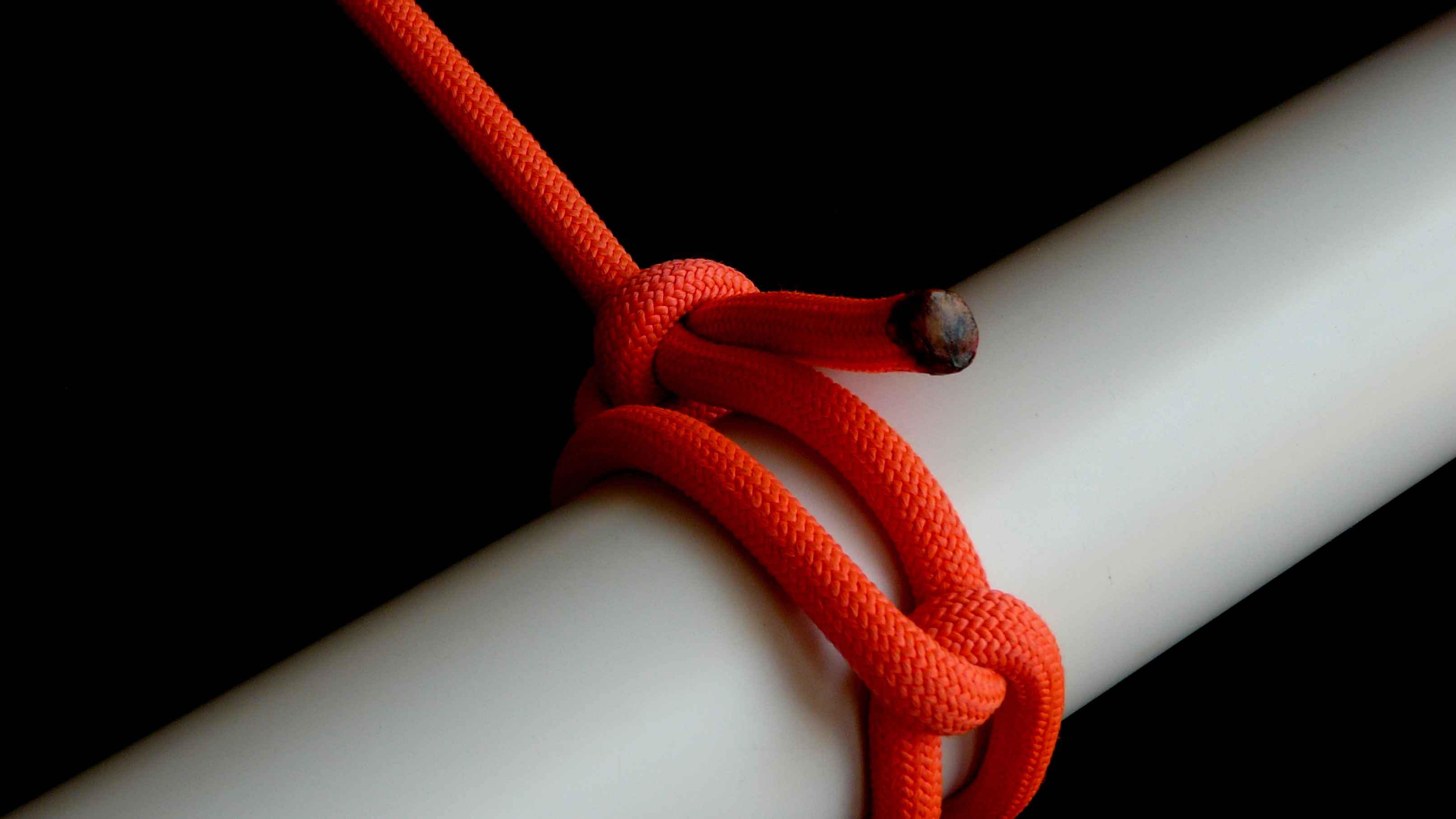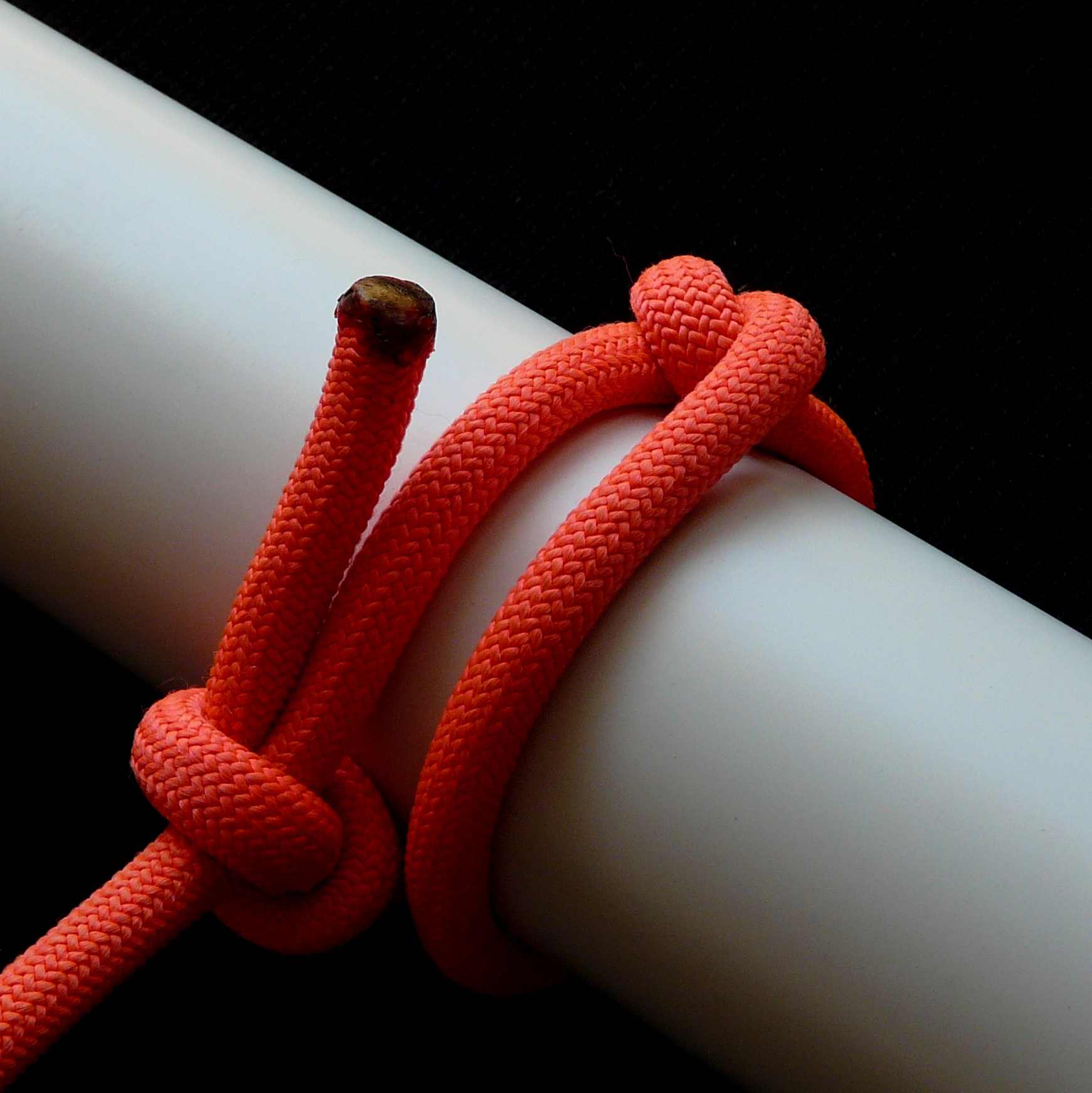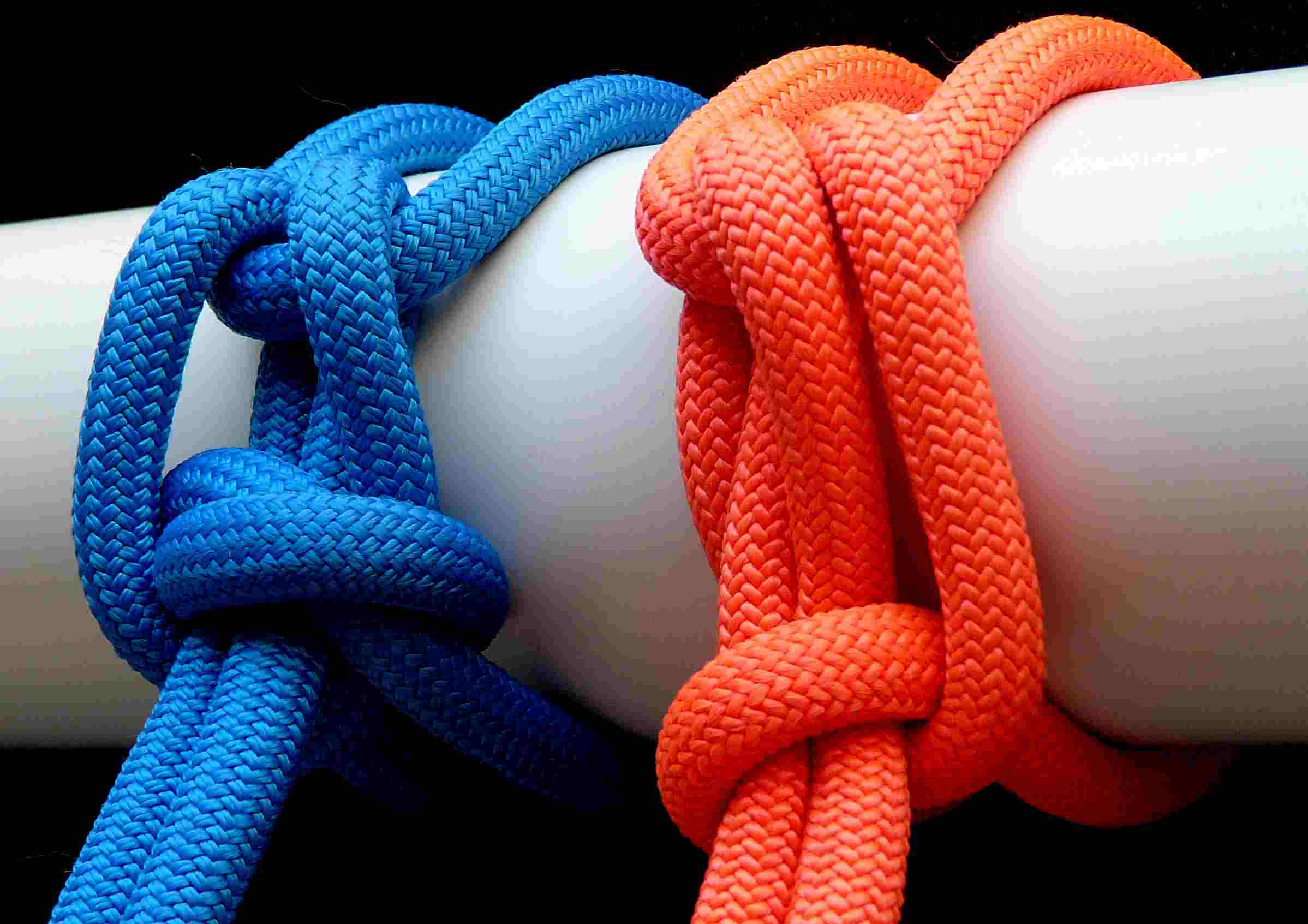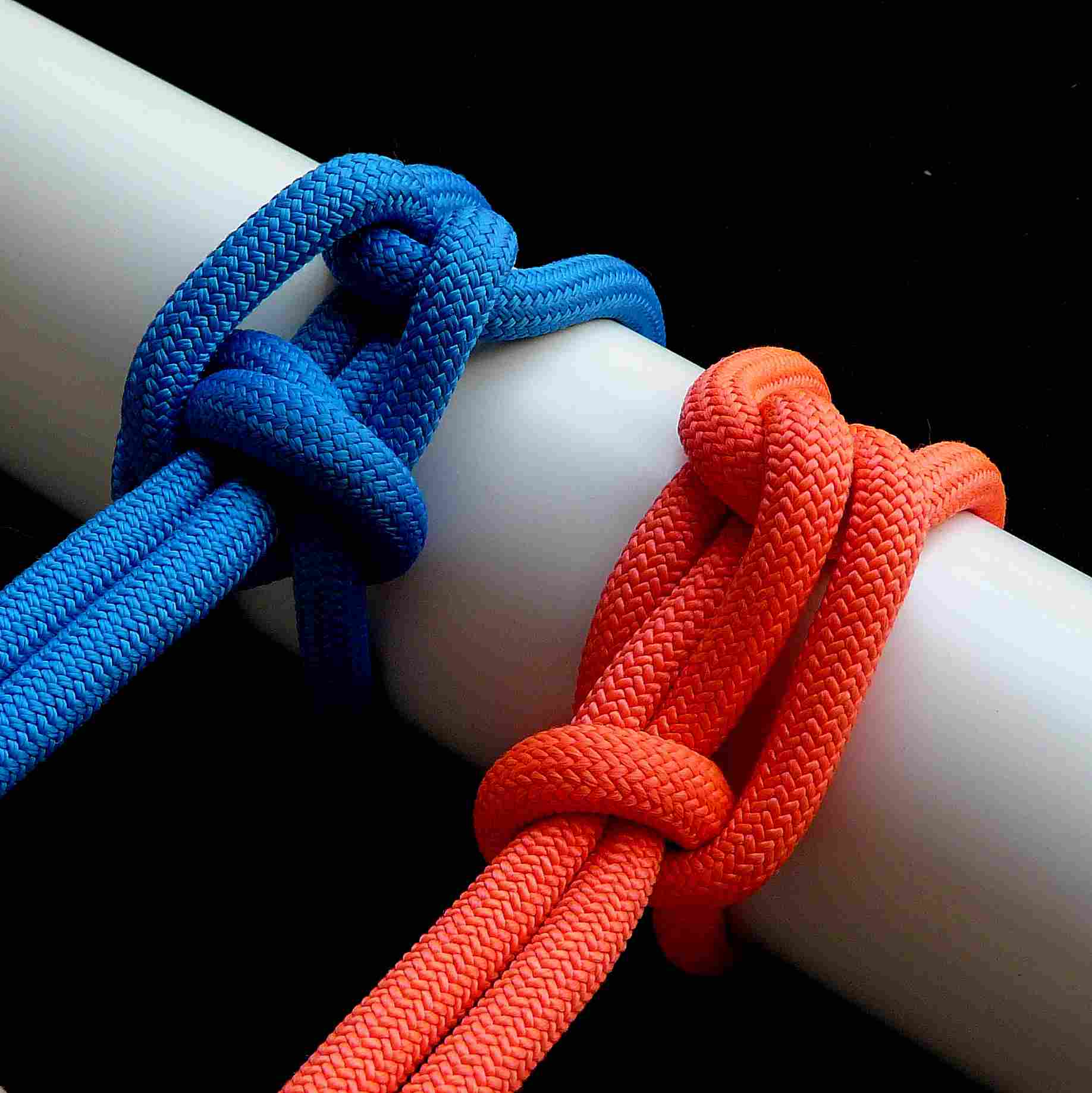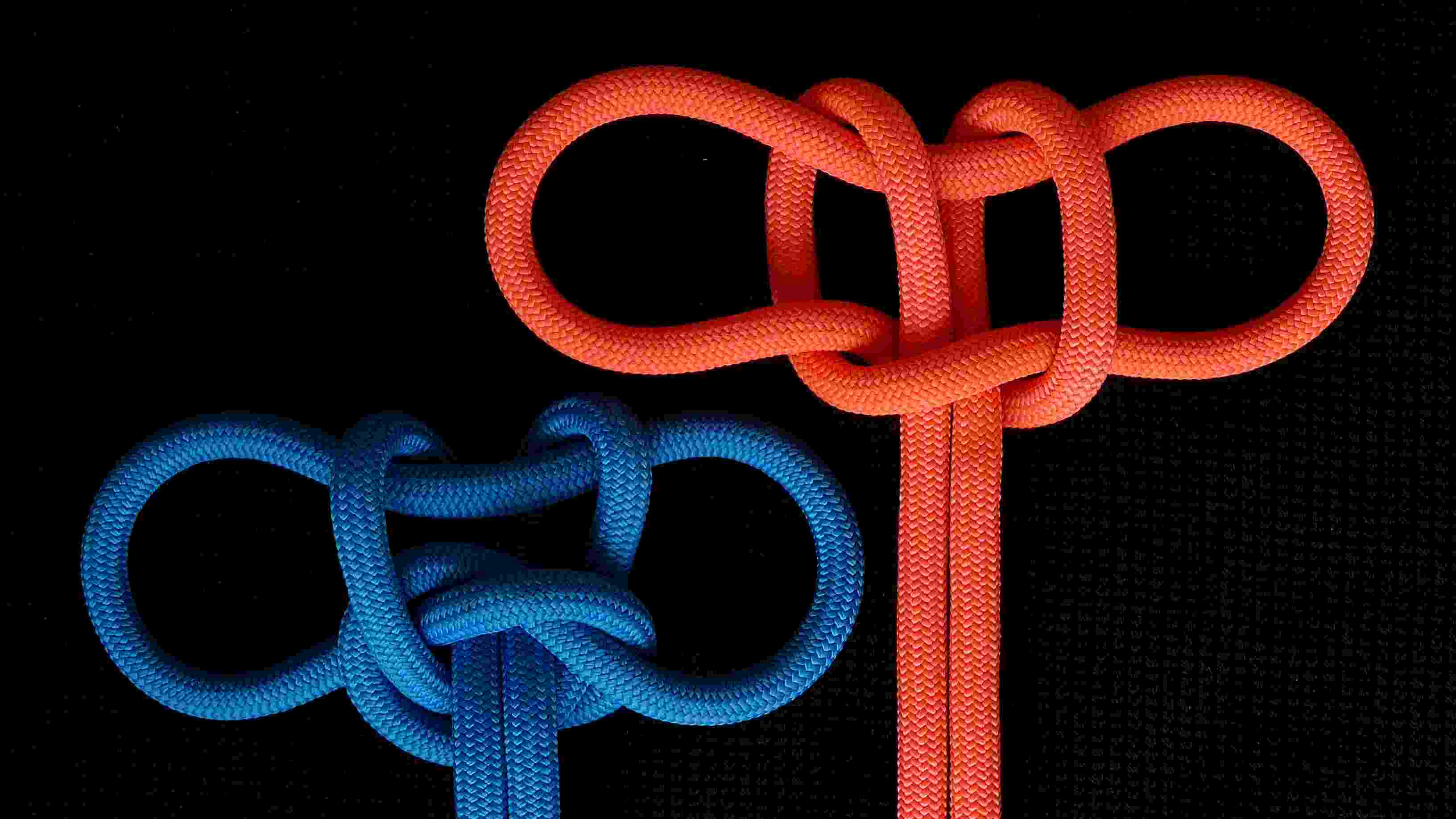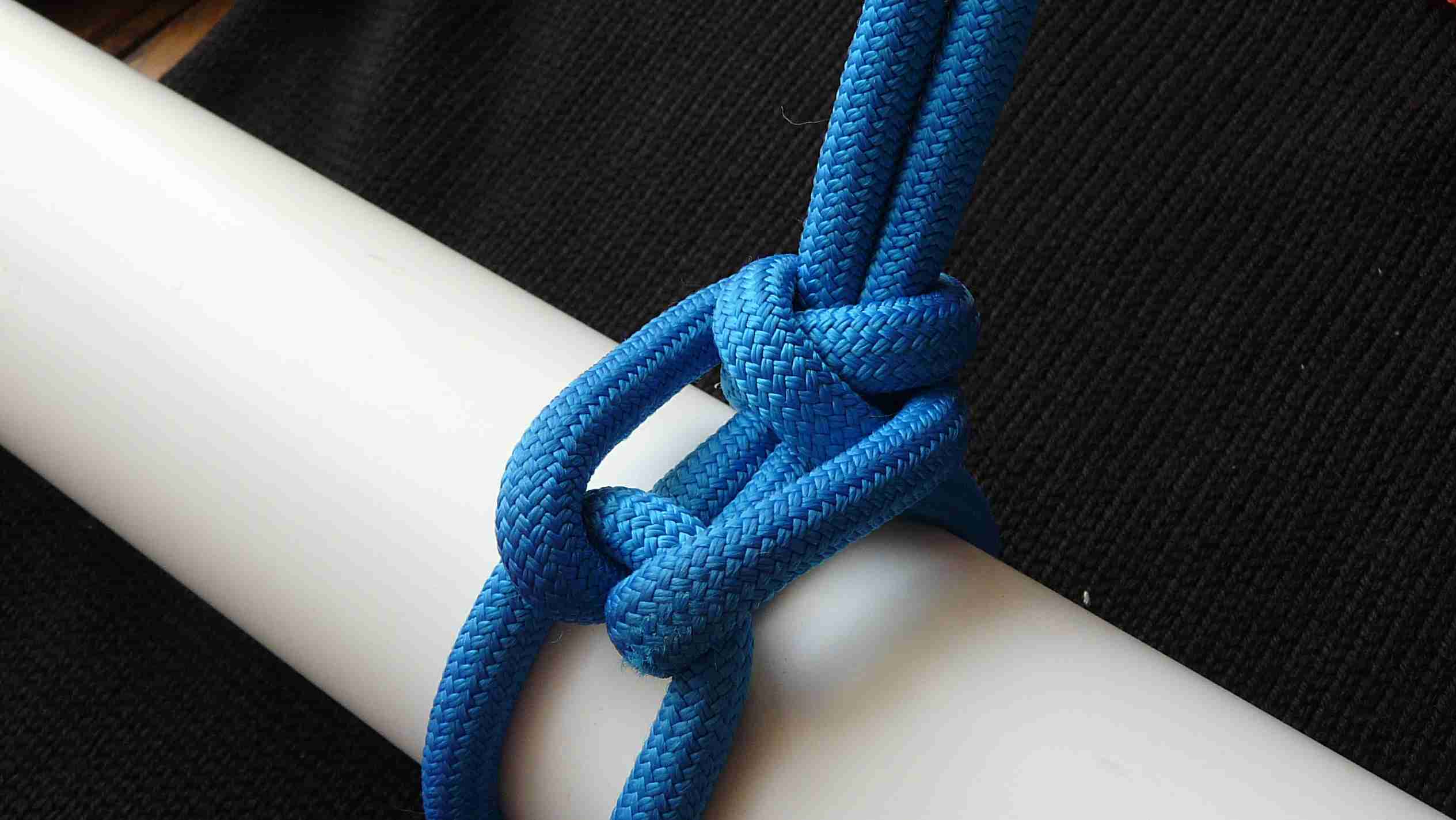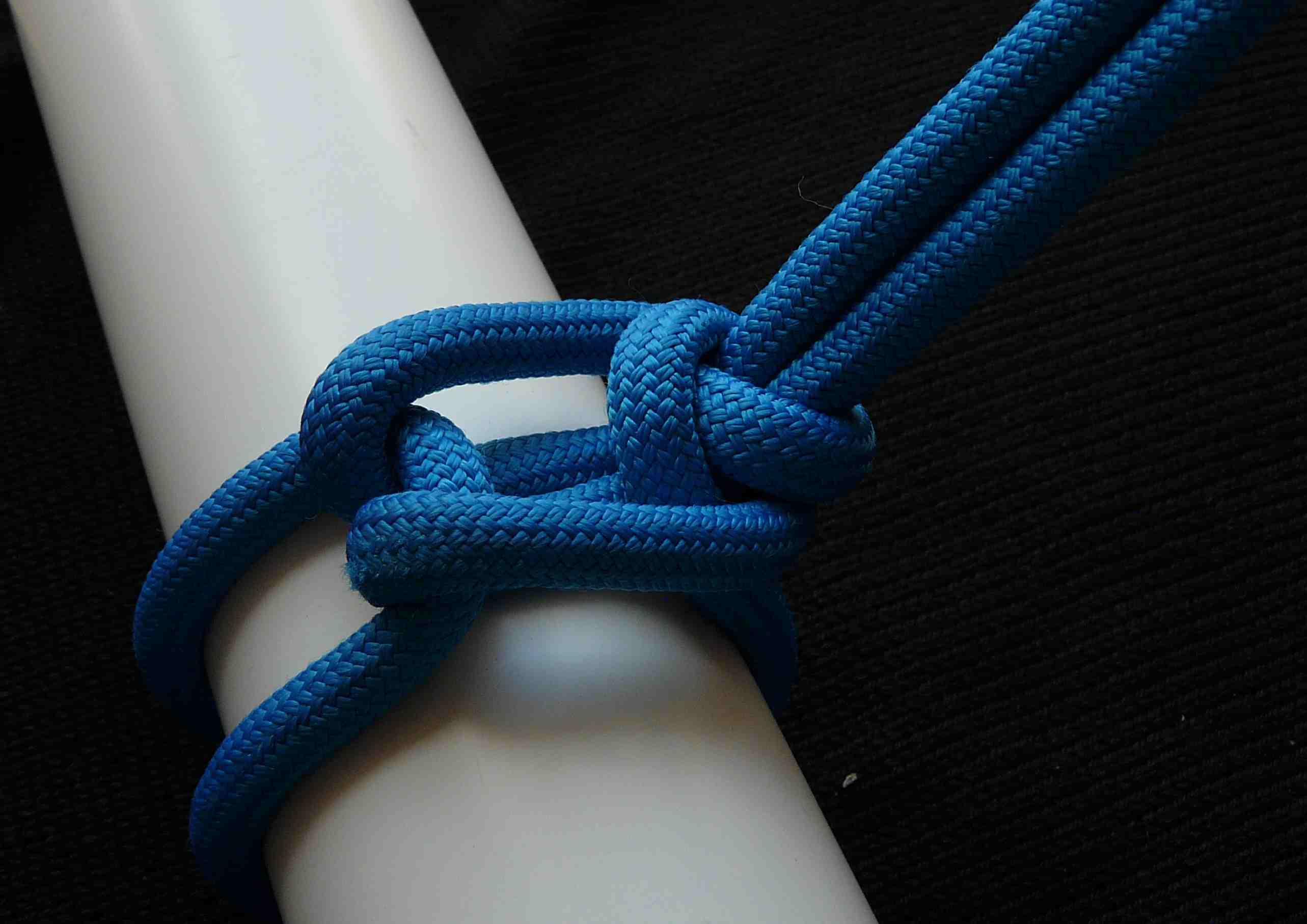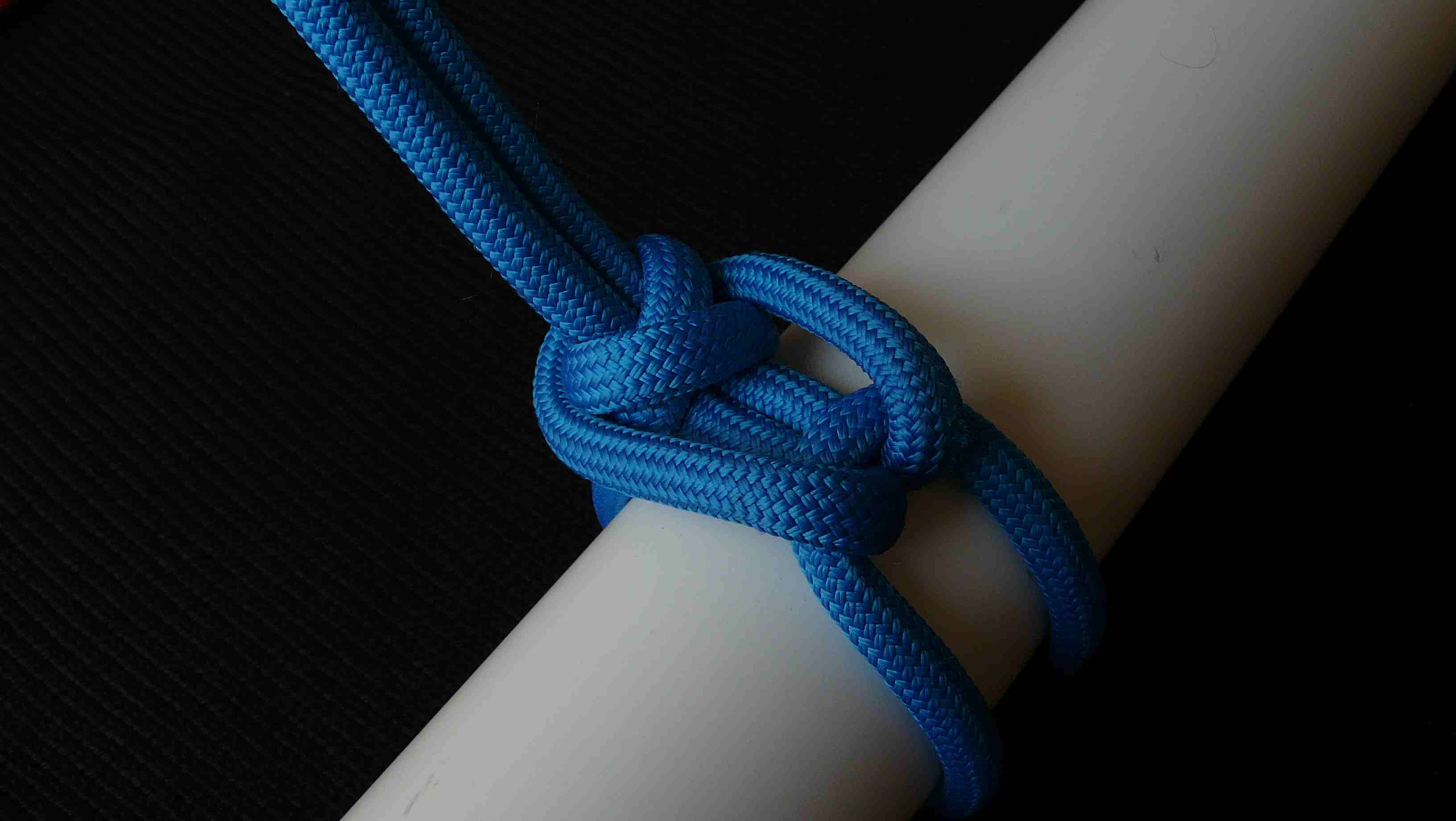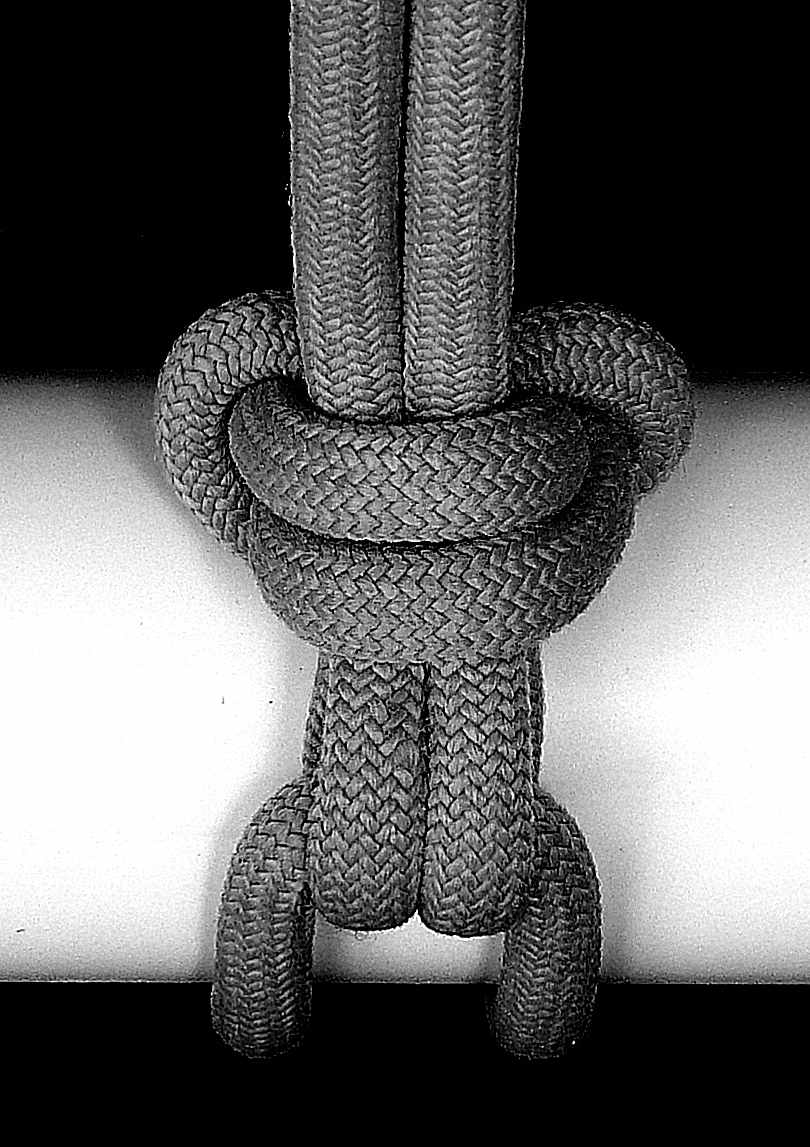Indeed - and to any two-wrap hitch based on the Cow hitch, where the 4 legs of the two interlinked Us are almost parallel to each other - because, regarding mechanical advantages, angles matter ! THAT was the purpose of this series : segments at “right” angles - which here means : parallel segments.
There is no “illusion” of U wraps. There is a 2 : 1 mechanical advantage in a properly “tacked” two-wrap hitch, while there can be NO such advantage in ANY one-wrap hitch - simply because the Standing End of a one-wrap hitch can be not pulled tangentially to the surface of the pole. That means that the 4 legs of the two interlinked Us are not parallel during pulling / pre-tensioning ( the Standing End, while it is being pulled against the pole, makes a 90 degrees angle with the other three ), so a great part of the mechanical advantage evaporates.
Now, one may argue : Why can we not pull the Standing End tangentially to the surface of the pole, i.e., in parallel with the other three legs converging in the same point ? The answer is simple - but it is better if one also gets the “feeling” of it, by actually tying and trying those tight hitches. Because, however tight a “tight hitch” would become ( at the end of the pre-tensioning ), at the beginning, when we start pulling the Standing End, it can not withstand a forced rotation, so it will simply re-adjust itself, it will rotate, and during the most critical stage of the pulling its Standing End would become perpendicular to the surface of the pole, and not tangential to it. Even if the hitch will not be rotated as a whole, its nub will, and this will deform it badly and destroy its locking abilities.
It is not - but I am afraid to get it you have to tie and try it first ! 
A hint : the segments of ropes work as “springs” : they can be elongated, they can accumulate and they can store tensile forces. This is something one loses when one analyses a block and tackle simple machine, made from ropes with, supposedly, fixed rope lengths. I have seen this effect in action : Hitches like those work much better when they are tied on nylon rope, which is more stretchy.
Noope !  When you will tie and try it, you will see another thing that you miss : During the pulling of one end ( remember, you have to pull the ends alternately, so each one of them receives your whole strength ), only three ends are tensioned - the end returning to you becomes slack, because there is so much friction at the contact points of the three interlinked Us.
When you will tie and try it, you will see another thing that you miss : During the pulling of one end ( remember, you have to pull the ends alternately, so each one of them receives your whole strength ), only three ends are tensioned - the end returning to you becomes slack, because there is so much friction at the contact points of the three interlinked Us.
So, you pull the one end of “your” U, the other end of this U gets lose, you have two more ends ( of the “other” U pointing towards you ) which assist you ( they never get loose ! ), and the opposite tip of the main U / loop coming towards you with half the speed you pull the one end of “your” U. This would had result in a mechanical advantage of 2:1 - IF you were not helped, during your effort, by the tension of the legs of the “other” U, which do not become loose. It may not be 4:1, because the other U may not support half of the load at all tomes, but it would be close. You have to see those four umbilical segments as four springs, three tensioned one and one non-tensioned.
Anyway, the talk about mechanical advantages is pointless, and it hides more than it reveals - because of the important factors left unaccounted : the friction at the contact points of the interlinked Us, and the springy nature of the segments of ropes. The important thing is to “see” how those hitches exploit fully the mechanical advantage of the Cow hitch, and are self-locking at the same time.
In short, there is no hitch that even comes close to what a tackled two-wrap tight hitch can do. The Butterfly Tackled hitch I had presented made the pole scream, literally, like no other hitch I had ever tied. Moreover, it opens up in a fraction of a second, just by pushing the one bight of its nub over the other, and loosening the “lock”.
